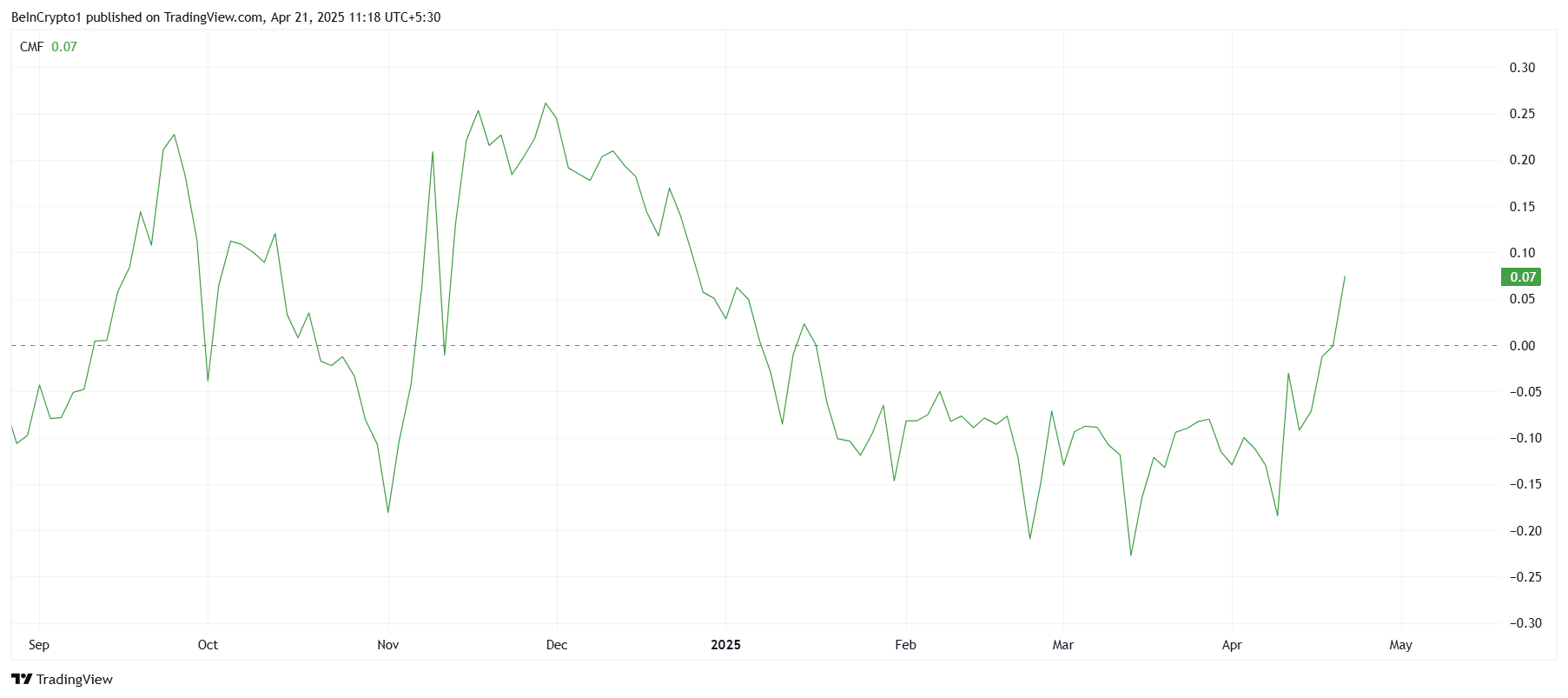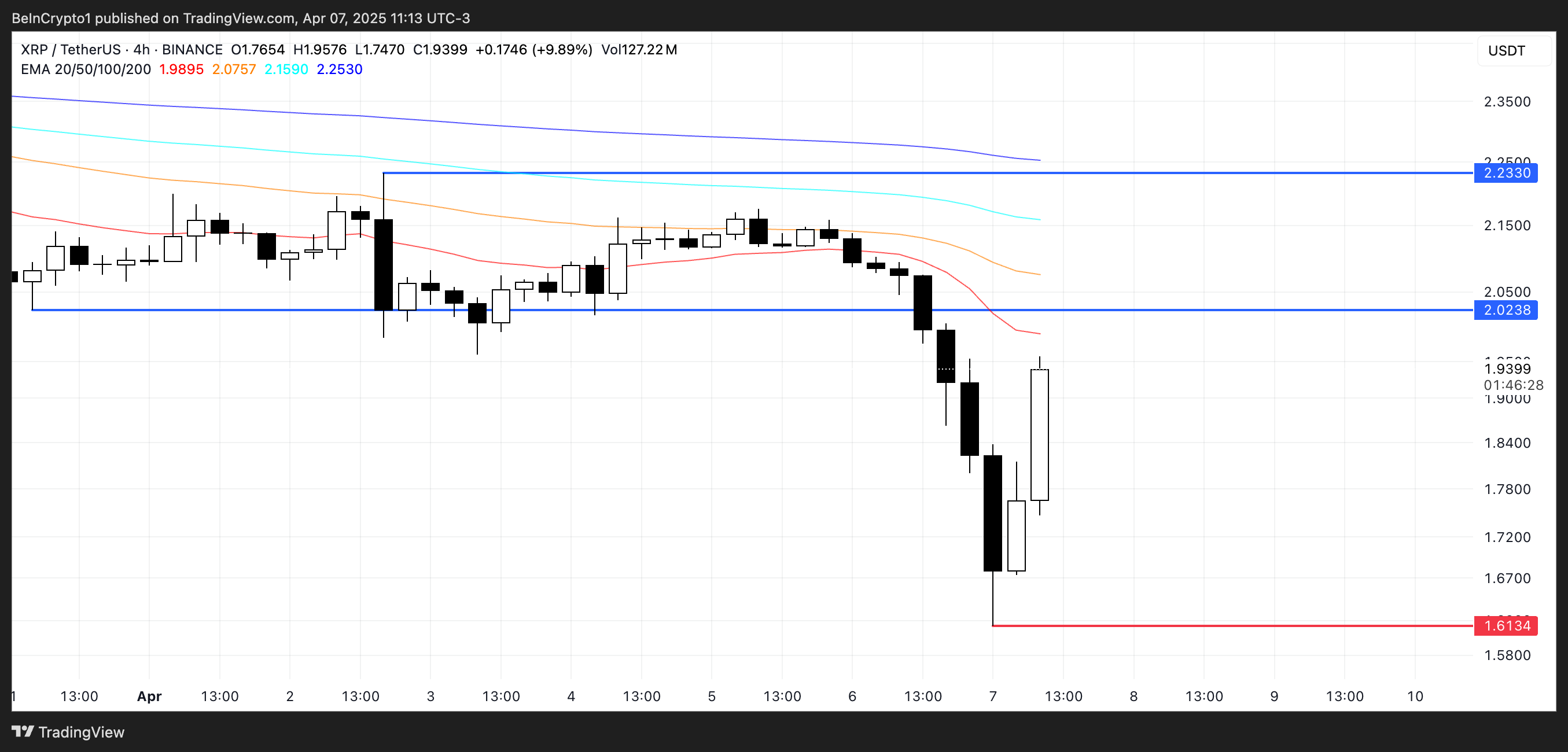Hedera (HBAR) has recently seen a shift in momentum after enduring a tough seven-week downtrend. The price of the altcoin dropped from $0.265 to as low as $0.130, signaling a significant decline.
However, there is optimism now, as HBAR seems poised to recover its losses. While this may signal a positive turn for investors, some traders could face significant liquidations.
Hedera Investors Are Gunning For Gains
The Chaikin Money Flow (CMF) indicator is showing signs of improvement, recently entering the positive zone above the zero line. This indicates that inflows are significantly outpacing outflows, suggesting a bullish outlook for HBAR.
Investors seem to have regained confidence in the token, entering at lower price levels in anticipation of price gains. The CMF is at its highest since the beginning of 2025, further reinforcing this positive sentiment and signaling that the altcoin’s prospects are improving.

The liquidation map indicates a significant event for short traders. As HBAR price approaches $0.178, shorts are at risk of facing $20 million in liquidations. This resistance level is crucial, and if HBAR breaches it, it could shift traders’ sentiment from bearish to bullish.
The looming liquidations would likely fuel more buying pressure, pushing the price upward. The recent market conditions hint at a potential breakout, which could drive HBAR into new territory, benefiting those who’ve entered the market at a low point.

HBAR Price Rise Gives New Hope
HBAR is currently trading at $0.171, marking a 3.3% gain today. While this increase may seem modest, the price action is more significant in the context of breaking a seven-week downtrend. This shift is creating optimism among investors, and it suggests that the altcoin is poised for further recovery.
The immediate next resistance lies at $0.177. Given the rising optimism and improving market conditions, there is a strong possibility that HBAR will break through this level. A successful breach could see HBAR pushing towards $0.197 and even reaching $0.200, which would confirm a bullish trend reversal.

However, if HBAR fails to break through $0.177, the altcoin could experience a pullback. This would result in the price falling to $0.154, with further decline potentially bringing HBAR down to $0.143. Any drop below $0.154 would invalidate the bullish outlook and may continue the downtrend.
The post $20 Million HBAR Liquidations Ahead as Price Breaks 7-Week Downtrend appeared first on BeInCrypto.







